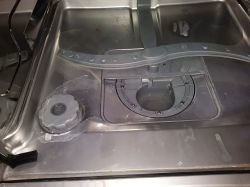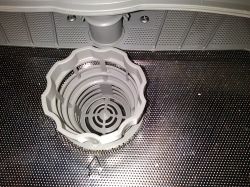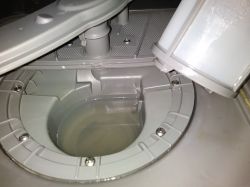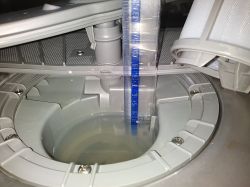For interested. After using this invention, the stains on the cutlery are the same as before, I don`t see any difference. The instructions say this is to catch loose bits of rust. After thinking about it, I don`t know where the loose pieces of rust in the dishwasher would come from. It is a neodymium magnet pressed into a block of aluminum. VooDoo product from the Energy Saver series.
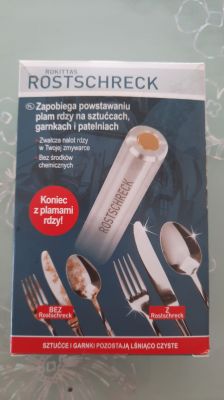
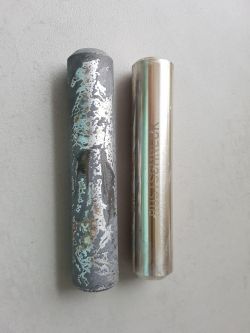
Sample reviews from Amazon:
I wonder if electrolytic coating of cutlery with nickel/chrome (I don`t know, I`m not a chemist) might solve the problem. Spots always appear in the same places, in micro pits. A layer of non-corrosive metal probably makes sense.


Sample reviews from Amazon:
Spoiler:
Actually not even worth one star. I`ve had the rust repellent for about 6 months and it has worked great. Unfortunately this product is a complete disappointment and is black after 5 uses! And I have more rust spots than before.
*
Cutlery in the dishwasher comes out of the rinse with rust stains despite the rust repellent. The rust repellent is in the cutlery basket and has a compartment to itself - the cutlery is spread out in the other compartments. To be honest: with Rostschreck there are even more stains on the cutlery. This would be a great idea - unfortunately it doesn`t work.
*
I`m not one to give negative reviews, I usually stay silent, but this product deserves a review. Theoretically, all this could work is that the rust particle is attracted to the rust repellent. In practice, however, it turns out that after the third rinsing process, the rust remover has significant dull spots. After another 5 rinses, the dull spots became rust spots. Cutlery that needs to be protected from rust will rust and stain, making it unappetizing (not cheap cutlery, but a 320 euro cutlery box). This product is the worst I have ever purchased from amazon. As an amazon, I would consider removing the product from your portfolio as it would only damage your reputation.
Conclusion: product worse than bad, sent back after 8 weeks, bought a new cutlery box ........ expensive experience
Actually not even worth one star. I`ve had the rust repellent for about 6 months and it has worked great. Unfortunately this product is a complete disappointment and is black after 5 uses! And I have more rust spots than before.
*
Cutlery in the dishwasher comes out of the rinse with rust stains despite the rust repellent. The rust repellent is in the cutlery basket and has a compartment to itself - the cutlery is spread out in the other compartments. To be honest: with Rostschreck there are even more stains on the cutlery. This would be a great idea - unfortunately it doesn`t work.
*
I`m not one to give negative reviews, I usually stay silent, but this product deserves a review. Theoretically, all this could work is that the rust particle is attracted to the rust repellent. In practice, however, it turns out that after the third rinsing process, the rust remover has significant dull spots. After another 5 rinses, the dull spots became rust spots. Cutlery that needs to be protected from rust will rust and stain, making it unappetizing (not cheap cutlery, but a 320 euro cutlery box). This product is the worst I have ever purchased from amazon. As an amazon, I would consider removing the product from your portfolio as it would only damage your reputation.
Conclusion: product worse than bad, sent back after 8 weeks, bought a new cutlery box ........ expensive experience
I wonder if electrolytic coating of cutlery with nickel/chrome (I don`t know, I`m not a chemist) might solve the problem. Spots always appear in the same places, in micro pits. A layer of non-corrosive metal probably makes sense.



